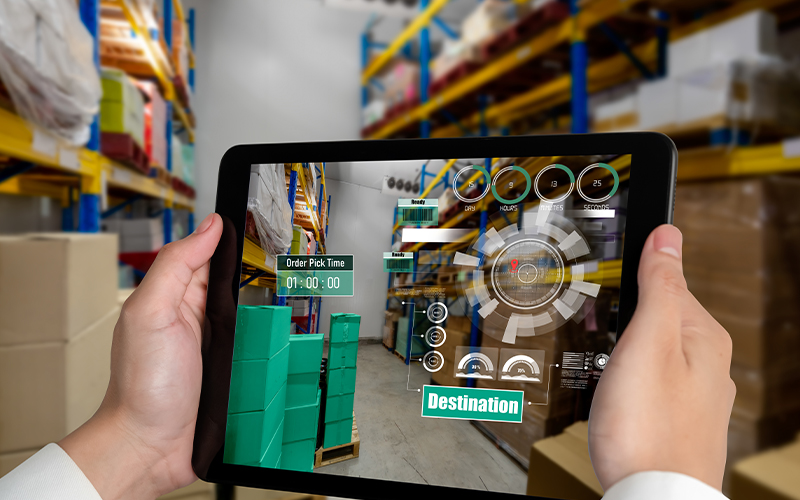Artificial intelligence is reshaping how businesses operate, with generative AI driving transformation in functions like sales and marketing. Although procurement and supply chain leaders have been late to adopting AI, AI and generative AI have become top investment priorities for supply chain leaders. As a result, experts forecast that the market for generative AI in procurement will grow steadily. Organisations today must reimagine their procurement operations as a strategic function, harnessing AI in procurement to streamline compliance, facilitate strategic decision-making, and integrate business operations for more agile and efficient supply chains.
Use cases of generative AI in procurement
Beyond automating routine tasks, generative AI presents a wealth of opportunities in procurement and supply chain management to drive innovation and efficiency. By harnessing these innovations, businesses can reduce manual efforts, extract actionable insights, and enhance decision-making. The practical applications of generative AI in procurement that can not only save cost and time but optimise resource management as well include:
Automated document creation
From generating custom RFPs to multiparty contracts with precision, generative AI in procurement can help automate document creation. This reduces one of the most labour-intensive aspects of procurement management, transforming the traditionally paper-heavy approach into a swift digital process while maintaining compliance and accuracy.
Intelligent data insights extraction
With the ability to retrieve, summarise, and extract insights from vast unstructured data, AI in procurement offers a robust solution for developing category strategies or sourcing suppliers. Moreover, by converting complex data sets into real-time insights, businesses can track shifting demands and leverage AI in the supply chain for agile strategic planning.
Enhanced stakeholder engagement
Generative AI-powered interactive chatbots can also guide users through their procurement journeys, fostering better relationships with both internal and external stakeholders. These intelligent systems help eliminate response delays associated with teams working in different time zones or navigating busy schedules. Generative AI in procurement can also facilitate mock negotiations, ensuring smooth and continuous stakeholder engagement throughout the procurement process.
Accelerated code integration
Legacy procurement and supply chain management systems often operate in silos, demanding extensive manual workarounds. Generative AI can bridge these gaps by automating code generation, ensuring seamless integration and data transfer across disparate platforms. This not only saves time but also improves interoperability, pacing the way for more robust AI solutions in procurement.
Proactive scenario analysis
Generative AI in procurement can also analyse various scenarios – like market events or strategic decisions – and provide detailed insights into potential outcomes. This proactive approach can allow decision-makers to explore various “what-if” questions and strategies accordingly to ensure a more resilient and adaptive procurement strategy.
Offering a suite of procurement outsourcing solutions, Infosys BPM can help businesses leverage next-gen technology and generative AI to redefine their procurement operations. With solutions ranging from category plan and execution and supplier relationship management to spend analytics and procurement strategy and consulting services, businesses can realise the full potential of generative AI in procurement and achieve best-in-class procurement status.
Implementing AI in the supply chain
Integrating AI into supply chain operations requires a clear, strategic approach that aligns the technology with business goals. The key steps in their process include:
- Defining the vision: Start by setting clear objectives and outlining expected outcomes.
- Mapping critical decisions: Identify and document key decisions across the supply chain and procurement lifecycle where generative AI can make the biggest impact.
- Establishing priorities: Prioritise areas to pilot AI solutions in procurement based on potential impact and resource availability.
- Reengineering workflows: Rethink end-to-end processes to integrate generative AI solutions for more streamlined and efficient workflows.
- Building the ecosystem: Start building an ecosystem of the right partners and infrastructure to support your AI in supply chain initiatives.
Challenges to overcome when implementing AI in procurement
Despite its potential, adopting AI in procurement is not without its challenges, and organisations must navigate these barriers to ensure successful implementation. Key challenges include:
- Ensuring skill and tech readiness: Businesses must overcome resistance to change through robust adoption, comprehensive training, and reliable technology and data management processes.
- Integrating with legacy systems: Integrating generative AI in procurement must start with addressing issues arising from outdated processes and legacy systems that can hinder innovation.
- Verifying data accuracy: Ensuring meticulous data and output verification is crucial to maintaining decision-making integrity.
- Navigating workforce transformation: AI in the supply chain gives rise to new roles. Managing these new roles and mitigating resistance to change by fostering a culture of continuous learning and adaptability is essential.
Although these challenges are significant, the benefits of embracing AI in procurement far outweigh the hurdles. Enhanced operational efficiency, substantial cost savings, and more informed, data-driven decision-making can transform procurement into a more agile, resilient, and competitive function.
Conclusion
Generative AI in procurement offers compelling benefits, from automated document creation to insightful data analysis and proactive planning. Embracing AI in the supply chain paves the way for strategic, agile operations. A well-planned implementation can overcome challenges and drive a successful procurement transformation.









